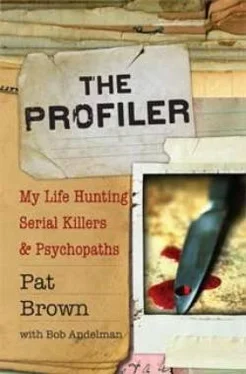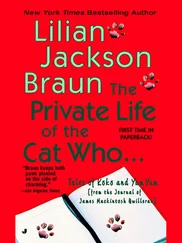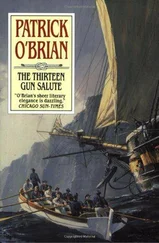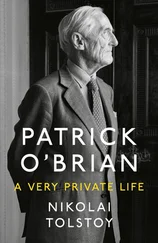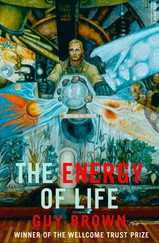His mother said, “My son cannot stand things around his neck choking him. He would not do this.”
I wanted to find out for myself what it would feel like so I called my daughter over.
“Honey, can you come into the bathroom? Mom has to hang herself.”
“Okay,” she said, knowing she’s seen me try worse.
When using myself as a prop, I always have someone “spot” me, stand next to me in case I get myself in trouble. Say, for instance, I am testing out the usefulness of a particular belt for hanging myself in a small closet space. I don’t want to accidentally reenact the whole scene successfully and then have another profiler analyze what happened to me.
“I’m going to put this belt around my neck and bend my knees and do what the soldier did, minus the fun part,” I told my daughter. “And just in case anything goes wrong, be here and grab my body and push it back up so I don’t pass out.”
I put the belt over the towel rod, wrapped it around my neck, and bent my knees. I took it to the point I could feel a constriction and a light-headed feeling start to occur. I didn’t stand with my knees bent until I was near to passing out; I only needed to test the feeling of the belt on my neck.
“That doesn’t feel bad at all,” I said.
My daughter rolled her eyes, eager for the experiment to be over.
I did not feel like I was choking. It did make me slightly giddy. But now I knew, firsthand, that when any parent said to me, “They wouldn’t do it because they would be choking,” I could say with authority, “No, it doesn’t feel that way. You do not feel like you’re choking. Actually, it makes you kind of happy; that’s why they do it.”
I proved the police correct on that aspect of the case.
On the wall in front of this young Japanese man was a little bit of shaving cream. The Japanese police claimed he was using shaving cream to masturbate. Was this true?
His mother claimed this, too, was a lie.
In the autopsy photos, on one hand, the young man had a tiny bit of white material. It was not semen, but it was some bit of dried white stuff, in the webbed area of his right hand between his thumb and first finger. It was not seen anywhere else. If he really used shaving cream, why would it be only in that one little spot? Wouldn’t we see a white film on more of his hand?
The family thought so. “That’s right. Somebody just dabbed a bit of foam on his hand to make it look like he was doing that. He would have had it all over his hand if he were really using it.”
I used a black light, two fingers of my left hand (as the young man’s penis), and my other hand to reenact the situation. When I finished and turned on the black light, the only place that I found shaving cream was in the web of my hand. I proved that he must have been masturbating, and hearing what I did makes the cops I tell crack up laughing. I didn’t have anything else to work with. I’m sorry! What can I say?
THE BRIAN LEWIS case taught me a lot.
Brian’s mother was adamant that her son had been murdered, but the police ruled it a suicide.
He was found sitting in the front seat of his car, an old 1977 Cadillac, with a shotgun up under his chin. It was a sad, sad case with horrifying crime scene photos. The damage caused to the head and face by a shotgun with its barrel pressed against the chin or placed in the mouth is horrific and grotesque.
This poor family had to see their beautiful son not looking anything like they remembered him because there were huge gashes distorting what remained of Brian’s face. It was a brutal thing for anyone to witness.
Brian worked nights at a grocery store and had appeared to be in a good mood to those who saw him that last night. After work, he bought some beer. Then the next morning, the family got the phone call that changed their lives. Brian’s car had been found in a remote mountain area with his body in it. He was dead of a self-inflicted shotgun wound.
The police closed the case pretty quickly. They looked at the crime scene and felt no need to do much in the way of evidence analysis or investigation. “It’s a suicide,” they reported. Brian was in an isolated location, alone in the car with a shotgun in his lap, and nothing indicated that anyone else had been with him at the scene or any crime happened. It looked like a suicide, so it was a suicide.
The family felt that the police rushed to judgment and failed to perform a proper investigation. They didn’t even test for fingerprints on the gun or the beer bottle between his legs. The family thought somebody staged that. They wanted the beer bottle and gun tested for fingerprints and they wanted people interviewed, but none of this was done. The family fought long and hard to prove that Brian would not have attempted suicide. They insisted he wasn’t depressed or upset or having any problems in life.
They came to me and said, “Can you look into this case and bring us some peace?”
One thing I learned right off was that “experts” often disagree with each other. At the beginning of my career, I wasn’t all that familiar with what happens when you shoot yourself with a shotgun, what happens to your head, what happens with the blood, in what direction the pieces go, and what happens to the wadding in the shotgun. I wasn’t a ballistics expert, so I sought out people who were. The original person I approached gave me information that turned out to be incorrect, and I had based a good portion of my initial profile on that.
In the beginning, I agreed with the family. I thought the blood looked like it was going in the wrong direction. But that was an error on my part, because I believed what the first expert told me.
I eventually sought out a different expert, but something still seemed wrong with the picture.
A third ballistics expert brought yet another conflicting opinion but one that came with a much better explanation. That’s how I learned that I shouldn’t blindly believe an expert; I need to find out why they believe what they do. We often see a courtroom expert who will give an opinion, but nobody bothers asking him exactly how he came to that opinion. Just because an expert says “In my professional opinion…” doesn’t mean you should automatically believe he is correct. The courts are a great example of this. How is it that the prosecution expert and the defense expert almost always give opposing opinions? They can’t both be right.
A profiler should always have a thorough explanation of each point in his profile so that anybody, whether a police detective or a victim’s mother, can understand exactly why we believe what we write. Any forensic expert should have a thorough explanation as well. I learned in this case to require any expert who analyzes any portion of a case I am working on to do the same.
The Lewis family believed that Brian did not pull the trigger on the gun that killed him. Someone else must have been responsible.
If you shoot yourself and the trajectory is going in a certain direction, it will continue in that direction. The family and private investigators they brought in looked at the blood spatter. Brian was shot sitting in the driver’s seat, and the shotgun muzzle was up against the right side of his neck, just under the jawline. They expected that the blood would go backward toward the backseat or maybe the back part of the driver’s window. But the blood in this case was mostly over the front half of the driver’s side window and on the roof of the car toward the front. It looked like the shotgun blast went up under his chin toward the back left door but then the blood U-turned and came out through the front of his face. The family and its expert thought the back of Brian’s head should have been blown off, but not his face. Wait a minute, I thought. Geez, that is pretty weird.
Читать дальше
